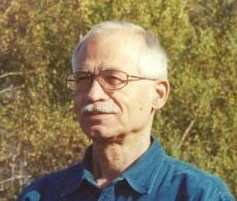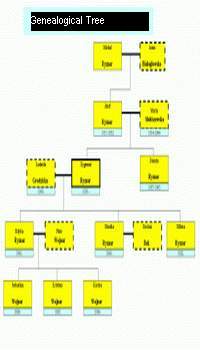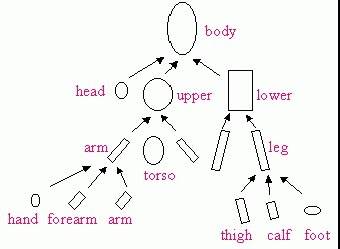|
<def happiness>
descr:
|
"
- Happiness is a state of well-being characterized by emotions ranging from
contentment to intense joy
- Happiness are emotions experienced when in a state of well-being
-
Happiness is not merely a life lived by accumulating moments of pleasure. On the contrary, happiness is a long lasting enduring enjoyment of life, it is being in love with living. It is your reward for achieving a good character and personal rational values in life. Some important values are a productive career, romance, friendship and hobbies.
Achieving these values requires rationality and takes effort and skill. Two types of skills you can use are thinking skills and valuing skills.
Once you learn to have confidence in your own mind and once you discover the virtues that make it possible for you to achieve your values and that make your life worth living, then you will experience the result - an earned pride and a genuine self-esteem. And of course
happiness.
- This is the art of living, the aim and object of our
existence. Without happiness, life is dry and meaningless.
With happiness, life immediately becomes fulfilled and
wonderful. Happy people keep themselves happy because they
know how they tick, they know the little ways to appreciate
themselves and to see the humour and magic in each moment.
Those people who are a bit heavy, who take life too seriously,
may lose their happiness also.
" |
</def>
OLH -Object Life History := [
birth, event-hist, ilness-hist, educ-hist, job-hist, death] .............. ........................
<def death>
descr:
|
"
For every cell, there is a time to live and a time to die.
Death is a part of living—and an essential one. From conception onward, cells divide over and over again. Their endless proliferation would quickly lead to elephantine bodies were it not for a compensating death of cells.
But cells' deaths can achieve far more than just crowd control. During fetal development, a symphony of cell deaths sculpts the body. During sickness, cascades of biochemical events euthanize diseased cells. Even healthy cells, as they age and lose vigor, commit suicide for the good of the organism.
The typical adult may create 10 billion new cells every day—and kill off an equal number. Indeed, cancers stem from cells that have foresworn the natural suicide plan that's programmed into an organism's genes. The progeny of these renegade masses of prolific immortals eventually set up squatter colonies that crowd out healthy tissues and siphon off resources.
There are two ways in which cells die:
- They are killed by injurious agents (mechanical damage, exposure to toxic chemicals)
- They are induced to commit suicide.
Programmed cell death (apoptosis) is a
normal component of the development and health of multicellular
organisms. Cells die in response to a variety of stimuli and during
apoptosis they do so in a controlled, regulated fashion. This makes
apoptosis distinct from another form of cell death called necrosis
in which uncontrolled cell death leads to lysis of cells,
inflammatory responses and, potentially, to serious health problems.
Apoptosis, by contrast, is a process in which cells play an active
role in their own death (which is why apoptosis is often referred to
as cell suicide).
Cells that are damaged by injury undergo a characteristic series of
changes:
- they (and their organelles like mitochondria)
swell (because the ability of the plasma membrane to control the passage of
ions and water is disrupted).
- the cell contents leak out
- inflammation of surrounding tissues.
Cells that are induced to commit suicide:
- shrink;
- develop bubble-like blebs on their surface;
- have the chromatin (DNA and protein) in their nucleus degraded;
- have their mitochondria break down with the release of cytochrome c;
- break into small, membrane-wrapped, fragments.
- the phospholipid, which is normally hidden within the plasma membrane, is
exposed on the surface.
Psychological view:
The finality of death is experienced when the she/he feels that is alone. The memories of the deceased keeps the person alive in the memories of family and friends. The faith in a higher power offers hope in a life after death for the deceased. This attitude provides a positive outlook towards life in the presence of the finality of death. "
|
|
</def>
<def body>
descr:
|
" A man is constructed from the cell, the simplest functional brick.
The cells which carry out the same function constitute the organs.The cell
is elementary biological filter, because has membrane, equipped with
selective permeability for various biological substances. Also human
organ is the biofilter by itself (e.g. liver, pancreas, lungs, skin) . When the
man is healthy, the biofilter cleans blood (clears it of slags) in
a range from minimum to maximum according to the basic law of homeostasis.
Performing the maximal blood filtration, any biofilter will have a tendency to
become obstructed with its own slags, in other words - to become blocked.
Performing the minimal blood filtration, any biofilter will have a tendency to
become blocked by a connective tissue. The inertia of time in the biofilter is
carried out by hormonal regulation. The immediate regulation is carried out by
the brain cortex. "
Body needs are biological and consists of the needs for air, food, water and a temperature range. These needs can be very strong because if deprived over time, the person will die.
The physiological needs usually taken as the starting point for motivation theory are the so-called physiological drives. Homeostasis and appetites (preferential choices among foods) are a fairly efficient indication of actual needs or lacks in the body.
Homeostasis refers to the body's automatic efforts to maintain a constant, normal state of the blood stream and to processes for (1) the water content of the blood, (2) salt content, (3) sugar content, (4) protein content, (5) fat content, (6) calcium content, (7) oxygen content, (8) constant hydrogen-ion level (acid-base balance) and (9) constant temperature of the blood. Obviously this list can be extended to include other minerals, the hormones, vitamins, etc.
Body is "manufactured" from 60,000 billion cells, contains, only in its blood, 22 billion cells, each one containing millions of molecules each oscillating 10 million times per second.
|



